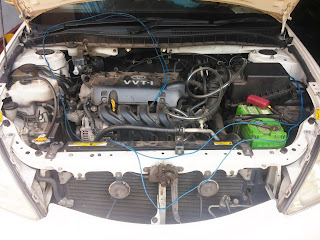A number of factors affect the fuel consumption of an ordinary vehicle, for example driving behaviors such as acceleration, speed, traffic and road conditions, vehicle conditions etc. Concerning the above factors, fuel price and environmental pollution the performances of an ordinary Internal Combustion Engine (ICE) has to be improved. In practice, ICEs used in vehicles are divided into three categories, that is. Spark Ignition Engine, Diesel Engine and Gas Turbine Engines. Spark Ignition Systems are widely used in automobiles. Here, petrol (gasoline) and diesel are highly used as the preliminary source of fuel.
Throughout this design process we have focused on the spark ignition systems (Petrol Engines) which use gasoline as the primary source of fuel and diesel fuel systems. In spark ignition systems an amount of vaporized fuel is mixed with an appropriate amount of air and these engines are designed to ignite the air-fuel mixture at the optimum instant.
If more vaporized fuel is fed into the system, it may leave some unburned/partially burned fuel in the piston chamber. This unburned/partially burned fuel is one of the main pollutants that originate from conventional Hydrocarbon fuel. Carbon Monoxide (CO), Oxides of Nitrogen (NOX) and smoke are the main pollutants produced by this process. The unburned/partially burned fuel causes in increasing the exhaust emission of an engine which results in reducing the efficiency of the engine. In order to decrease the amount of exhaust emission it is necessary to increase the thermal efficiency of the engine.
Water Hybrid Kit Installed on a Toyota Land Cruiser (3000cc Diesel )
Water Hybrid Kit Installed on a Suzuki HT51s (1300cc petrol)














0 comments:
Post a Comment